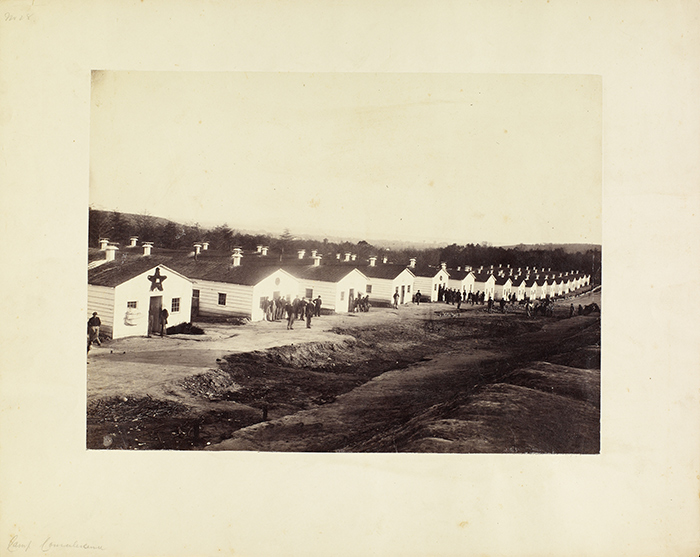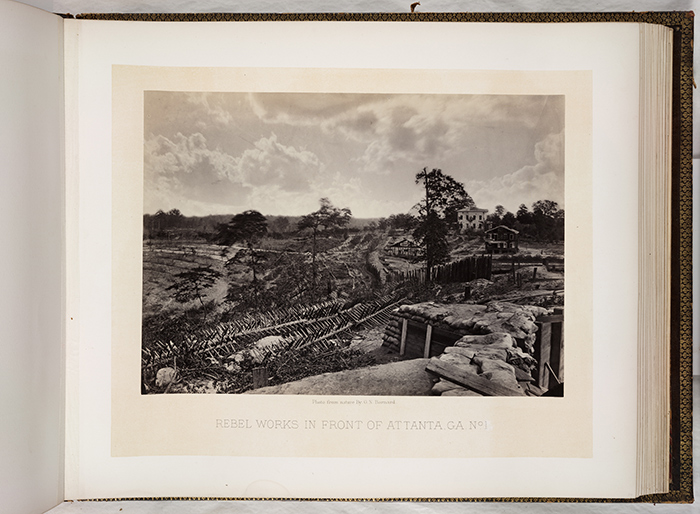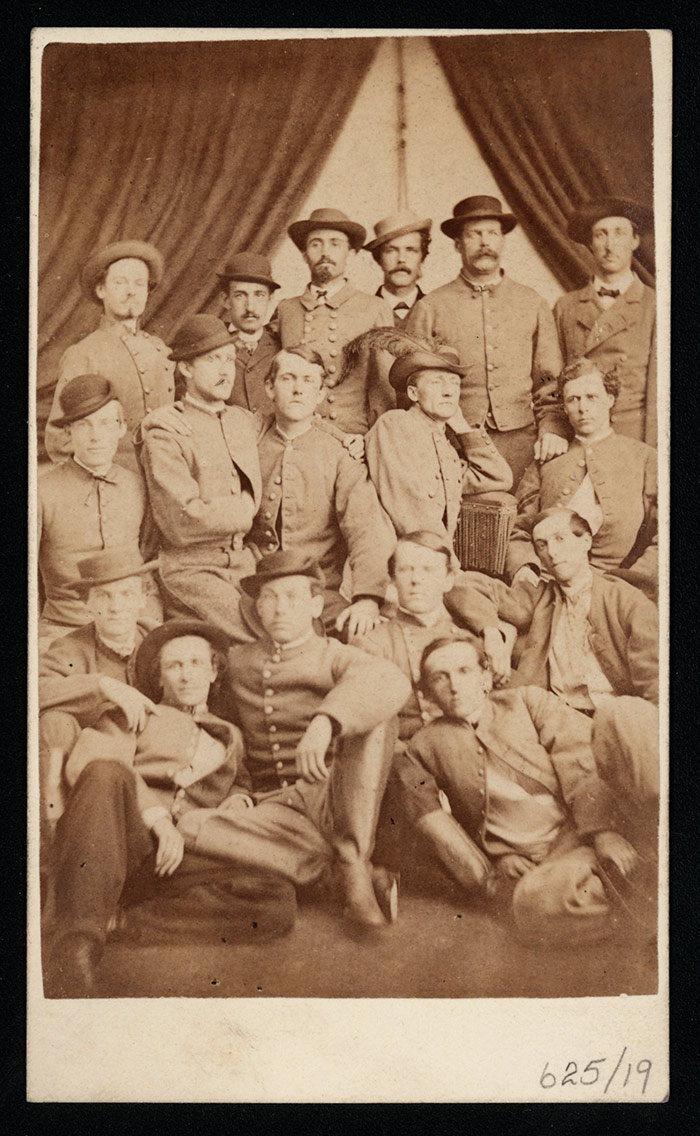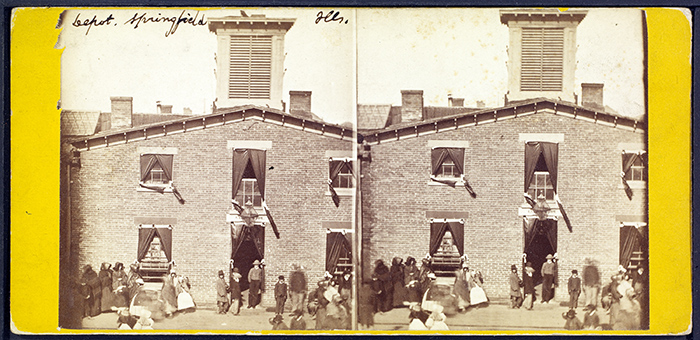
Camp Convalescence, Alexandria, Virginia. Jan. 1864. Albumen print. Photograph by Andrew J. Russell (1829–1902). The Huntington Library, Art Collections, and Botanical Gardens.
By the spring of 1865, when surrenders at Appomattox, Durham Station, and elsewhere had finally delivered an end to four years of bloody battle, the American Civil War had killed a staggering 750,000 soldiers and 50,000 civilians—about two and a half percent of the U.S. population—and wounded hundreds of thousands more.
The turbulent closing down of the war will be the focus of “Ending a Mighty Conflict: The Civil War in 1864–1865 and Beyond,” a conference taking place at The Huntington from Sept. 18–19, 2015.
Joan Waugh, professor of history at the University of California, Los Angeles, and Gary W. Gallagher, professor of history at the University of Virginia, will convene the two-day conference, bringing together a dozen of the nation’s leading Civil War scholars to examine the final year of the war and its immediate aftermath.
“Yes, the Union had been restored, slavery destroyed, and the work of the founding generation made safe,” said Waugh, “but it was only the start of a painful and controversial process of national political reunion.”

Rebel Works in Front of Atlanta, Ga., No. 1. 1864, printed 1877. Albumen print. After Confederate forces evacuated Atlanta, photographer George N. Barnard (1819–1902) documented the trail of destruction left by Sherman’s notorious “March to the Sea.” The Huntington Library, Art Collections, and Botanical Gardens.
The war’s end brought jubilation across the U.S. and a mixture of sadness and relief to the defeated Confederates. The suffering on both sides made genuine reconciliation difficult to achieve. Looming issues included the need to set the terms for readmitting the rebellious states and determining the meaning of freedom for four million former slaves.
Scholars will address the primary issues in the conflict’s final year. Topics will include the roles of Abraham Lincoln and Confederate president Jefferson Davis in ending the war; some of the key clashes that turned the tide toward Union victory, such as Sherman’s “March to the Sea”; and how Confederate General Joseph E. Johnston, and others, viewed surrender. The presenters will also examine pivotal events of the period, such as Lincoln’s reelection in 1864 and his tragic assassination just days after the surrender at Appomattox.
The conference coincides with the final year of the Civil War Sesquicentennial, the commemoration of the war’s end 150 years ago. The impressive group of Civil War scholars on hand will likely close that remembrance with a bang.
In addition to conveners Waugh and Gallagher, other presenters will include Pulitzer-prize winner James M. McPherson, Harvard University president Drew Gilpin Faust, and Yale professor of history David W. Blight, a former Rogers Distinguished Fellow in 19th-century American History at The Huntington, among other renowned Civil War scholars.

Col. John S. Mosby and Some of His Men, ca. 1863, printed later. Albumen carte-de-visite print. Confederate commander Mosby, seated and wearing a feathered cap, earned the nickname “Gray Ghost” for his lighting attacks and ability to elude capture. Photograph by Lee Gallery (active 1870s). The Huntington Library, Art Collections, and Botanical Gardens.
These researchers are no strangers to The Huntington’s remarkable collection of Civil War manuscripts, printed materials, rare books, photographs, and ephemera. Most if not all of the historians have plumbed the depths of these holdings to produce their own scholarship.
Many objects in the collection—such as a set of rare regimental histories dating from 1864–66 from the John Page Nicholson Papers—shed light on the final stages of the conflict. Conveners Waugh and Gallagher point to recent events in our nation’s history as testimony to the Civil War’s enduring potency.
“The memory of the Civil War has been contested since the guns fell silent in the spring of 1865,” said Gallagher. “The St. Andrew’s Cross battle flag has been the most visible, and divisive, symbol of the Confederacy, and current debates underscore the continuing power of the conflict to arouse passions.”
During the conference, scholars will investigate the range of complex issues that plunged our nation into war 150 years ago—issues that still incite controversy today.

Great Western Depot, Springfield, Illinois. 1865. Albumen stereographic print. Dark bunting shrouds the railroad depot, the final stop of Lincoln’s funeral procession. Attributed to Schreiber & Glover (active ca. 1864–66). The Huntington Library, Art Collections, and Botanical Gardens.
“Ending a Mighty Conflict” will be the sixth Civil War conference to be held at The Huntington since 1999, with Waugh helping to convene all six. The Huntington began its sesquicentennial commemoration in 2012 with two exhibitions: a Library show titled “A Just Cause: Voices of the American Civil War” and a photography exhibition called “A Strange and Fearful Interest: Death, Mourning, and Memory in the American Civil War.”
You can visit the web component of “A Strange and Fearful Interest,” including commentary by many of the same historians who will be speaking at this month’s conference. In addition, you can read an article in the Spring/Summer 2015 issue of Huntington Frontiers about the book A Strange and Fearful Interest, which grew out of the photography exhibition. You can also purchase the book online from the Huntington Store.
Many lectures exploring themes relating to the Civil War are available at iTunes U under the category titled “Abraham Lincoln and the Civil War.”
Related content on Verso:
Lincoln’s Last Hours (April 14, 2015)
The Union Forever (March 31, 2015)
“Where Solomon Northup Was a Slave” (March 3, 2014)
VIDEO | Voices on the Civil War (Oct. 12, 2012)
The Civil War Lives (Oct. 25, 2011)
Mystic Chords of Memory (March 4, 2011)
Many Happy Returns (Feb. 16, 2011)
Diana W. Thompson is senior writer for the office of communications and marketing at The Huntington.
